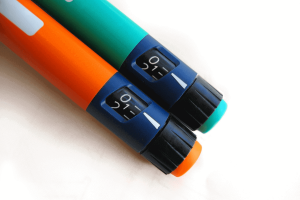What is diabetic retinopathy?
The name may sound complicated, but simply put, diabetic retinopathy is an eye condition that affects 4.2 million people with diabetes.
According to the American Optometric Association, diabetic retinopathy occurs when a person’s blood sugar levels are too high for too long. This puts extra strain on several areas throughout the body, including the eyes. Patients with diabetic retinopathy experience damage to the retina, collection of light-sensitive tissues in the back of the eye that helps people see.
It is possible to develop diabetic retinopathy without knowing it, Mayo Clinic says. In fact, most people who have the condition aren’t aware of it during its early stages of development. As damage to the retina continues to spread over several years, people will begin to notice symptoms such as blurred vision and difficulty perceiving color. In the later stages of diabetic retinopathy, some will begin to see dark strings or spots.
The good news is many people with diabetes don’t experience any conditions, and those who do only have mild symptoms. Here are a few things you can do to make sure your vision is well-protected:
- See your optometrist annually for a dilated eye checkup.
- Keep your blood sugar under control.
- Watch your blood pressure–the American Diabetes Association says high blood pressure and eye problems often go hand-in-hand.
- Talk to your doctor if you have any eye concerns or symptoms of diabetic retinopathy.




